One of the persistent problems in describing Civil War-era battles is that neither side generally had access to accurate maps of the battles’ locations. Each side possessed cartographers whose job it was to document the battlefields but there were hardly maps that were precisely surveyed and were more like artist’s renderings. In addition, the senior commanders rarely had any knowledge of local place names. One such example is a map draw in 1889 by Col Porter Alexander suggesting an alternate attack route from the north led by Ewell as opposed to Longstreet. It contains a few place names that he may not have had any knowledge of in 1863.
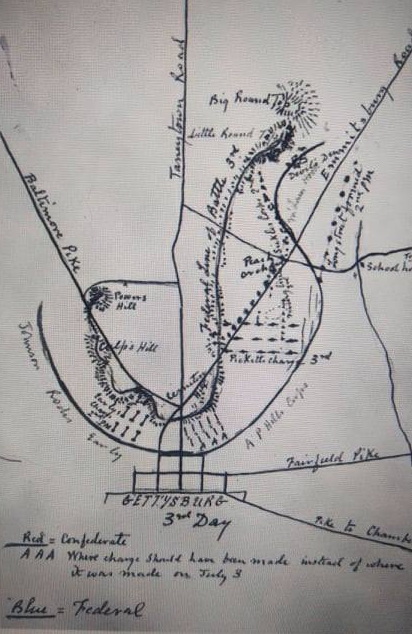
GEN Lee refers in his written accounts of Gettysburg to “high ground” in the Union left flank. Most historians seem to take that as a reference to Little Round Top. Troy Harman, however, lays out a case that this was actually the knoll upon which the peach orchard stood. Precisely the same “high ground” that bothered LTG Sickles so much!
A similar argument persists over ‘copse of trees’ on Day 3. This has become another major point of contention if not outright argument over whether or not Lee actually pointed to that area as an order for Longstreet/Pickett to focus the attack on.
Harman throws a grenade into this ‘myth’ by trying to debunk it completely. He argues that larger more mature wooded area known locally as Ziegler’s Grove (or Woods) was Lee’s aiming point. As viewed by the CSA generals on Day 3, Ziegler’s Grove was to the left of the (fabled) copse and exactly next to the Cemetery. It would also have been in the path of Pickett and his entire support cast on his left flank had any of them managed to get that far. Undoubtedly, the copse of trees and the adjacent angle in the stone wall atop Cemetery Ridge was where the frontal assault wilted, but was it truly the objective or just (in modern parlance) a phase line?
As Harmon reconstructs the story of how we arrived at what he terms the ‘affirmed story’ (as opposed to the reality), Ziegler’s Woods were chopped down about 1886-7 to be used as lumber. He further relates that the (mythical?) story of the copse of trees was generated primarily by one man; one John Bachelder who was a member of the Gettysburg Battlefield Memorial Association. The minutes of their Sep 25th 1888 meeting details how he motioned to erect a fence and plaque at that – now much more mature — group of trees to commemorate them as the high-water mark of Pickett’s attack. Remember now the larger grove of trees was now gone. Harman introduces other post-battle but contemporary documents to suggest that the now famous ‘copse’ was more a barely visible cluster of saplings! Some historians even go so far as to suggest that Lee was directing Longstreet to attack the stone wall precisely at ‘the Angle’, but that too would hardly have been discernable even through field glasses at that distance plus the fact that the wall was falling away from Lee’s point of view and likely completely out of sight. Harman simply states that the focal point of Lee’s attack was to be Ziegler’s Grove! The simple fact that it no longer existed some 25 years after the battle has seemingly removed it from the discussion.
In addition, he spends nearly an entire chapter of the book listing the writings of Union officers who fully believed that the focus of the attack was Ziegler’s Grove as opposed to the ‘copse of trees’. To a man, they had a hard time envisioning how such a minor landmark could have drawn Lee’s attention versus the prominence of the grove just to it north. The simple fact that the attack petered out at that point does little to affirm that the copse was indeed the target.
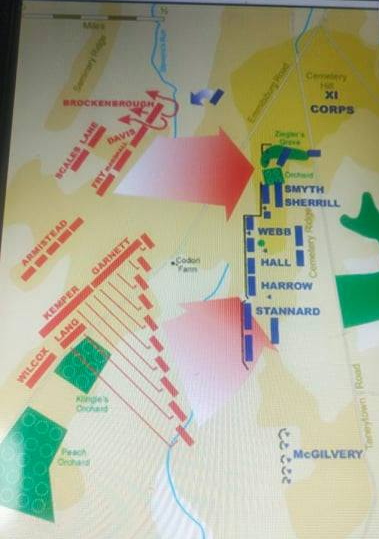
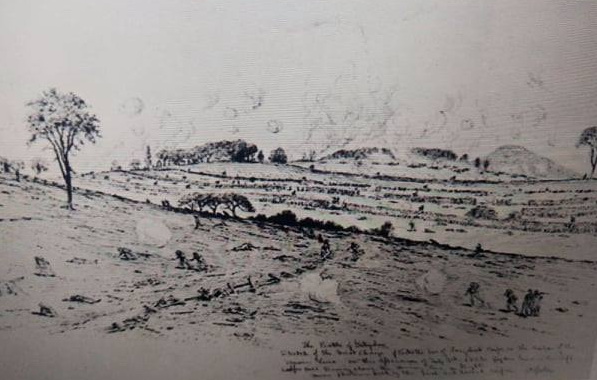
An additional supporting factor is that the Grove would have been visible from both directions, west and north. So it could have served as a guide point for all of Longstreet’s attack force as well as Ewell’s from the north. This map shows the approximate location of the Grove just west of the cemetery.
Lee would have no way of knowing that the Grove was actually the seam between XI and II Corps and would have been an ideal point of attack instead of into the heart of Hancock’s force to the south. Harman also questions what the CSA would have gained if Pickett had simply punched a hole in Hancock’s line. Would not the Cemetery have made more sense as a military objective — particularly if all of the pieces of Lee’s plan to attack it from the north (Rodes), west (Pettigrew & Trimble) and south (Pickett) had come to fruition?
PART 2
It would seem to me that Ziegler’s Grove is a much overlooked niche of the overall Gettysburg battlefield. It was not an overly large grove of trees but it was strategically located on the western edge of the Cemetery. Seemingly it would have provided a logical gateway for an assault on that stronghold. Why then wasn’t it utilized?
In his seminal work, Lee’s Real Plan at Gettysburg, Tom Harman postulates that that grove and not the smaller copse of trees was the area that Lee was focused on for the 3 July attack! He lays out (see above) the scenario whereby the grove, which was logged out in mid-1880s, was lost to history and replaced by the copse that provided LTG Hancock shade for his Second Union Corps HQ. It was also close to the seam, the meeting point of the Eleventh Corps troops occupying and defending the Cemetery and the right flank of Second Corps. Although Lee would have had no knowledge of such a meeting point, any such seam between two commands is a point of vulnerability.
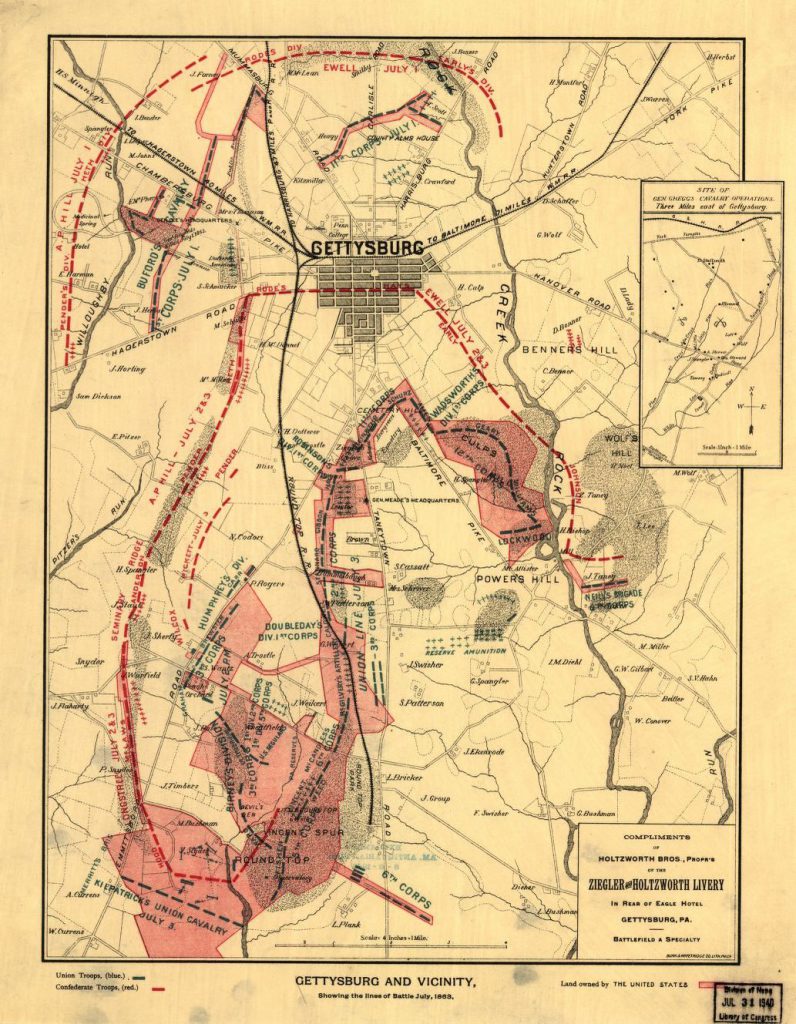
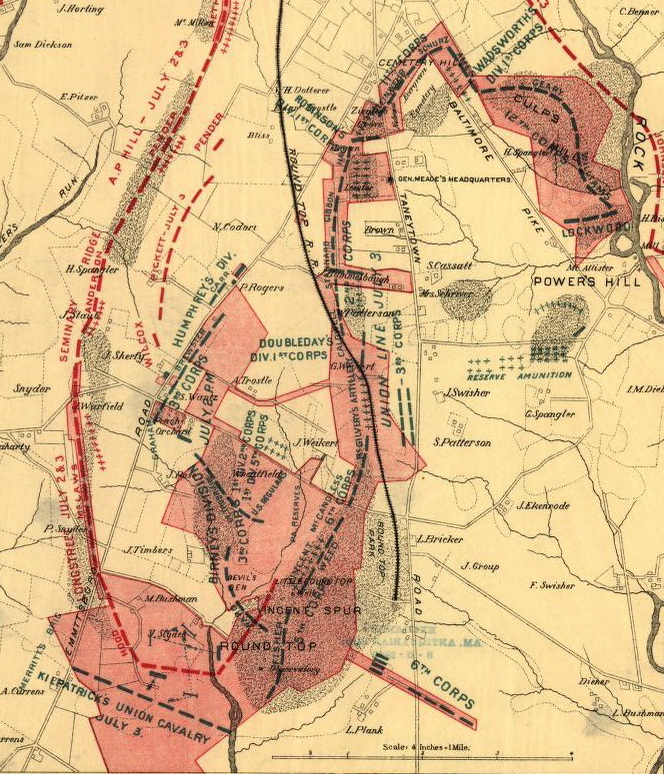
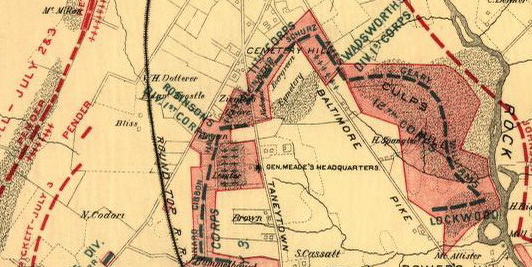
History does not record why Ewell/Rodes did not choose to attack through that wooded area in their late-day attack. Perhaps it was viewed as too far to Rodes’ right flank. He was mainly supporting the main attack by MG Early on his left flank. But that approach took his men up the rather steep and unwooded north-facing slope of the Cemetery Hill. The greatest strength of the Union forces defending the Cemetery were the concentration of cannons there. Approaching via the woods might have offered some cover and concealment to any CSA attackers. Also it would seem that that grove would have allowed any such attacking unit to ascend the slope farther to the west out of sight and range of the defenders and attack them on more level ground, not fighting uphill as had been done on Day 2.
Unless there was some unknown entity or inhibiting factor, it is hard to fathom why a brilliant tactician such as Lee could have missed such an opportunity. If Harman is correct, then Lee may not have overlooked this gateway to the Cemetery, his troops just never got that far! On Day 3 that portion of the battlefield belonged to the cobbled together remnants of LTG Hill’s Corps that never effectively made it beyond the Emmittsburg Road. Then, within about 20 years, the woods were gone. So future historians seemingly lost any perspective and concentrated on the copse of trees a bit farther to the south.
Returning to the WHATIF concerning how Lee may have better utilized Stuart’s cavalry, could they have used that woods as a gateway to the Cemetery? Granted the trees would have been an impediment to mounted operations [see Section 30k] but those men were not inexperienced at dis-mounted operations. On Day 1, Buford’s dismounted cavalry proved themselves worthy opponents in that mode.
Alternately, could Rodes have moved troops from his right flank a bit to the west and entered the grove as Pickett’s massed formation was grabbing the attention of the entire west-facing Union line? This would have been something of a stealth operation and then a surprise charge out of the woods. The Union artillery would have concentrating on the attackers coming off Seminary Ridge and may have been completely unaware of a force advancing via the woods.
Such a maneuver or utilization of that grove, may have provided an avenue to a CSA victory that history never seems to mention.
PART 3
I have tagged Ziegler’s Grove as the Gateway to the Cemetery. This is not to imply that it was an open door. It is well documented (along with just about everything else at Gettysburg) that it was where the right flank of MG Hays’ Division was located and abutted elements of the First Union Corps in the Cemetery proper. These New York units were also aligned behind rather substantial stone walls just to the west of the Cemetery. In addition, the famed 8th Ohio Regiment that caused so much havoc with their enfilade volleys started out just to the north of the Grove.
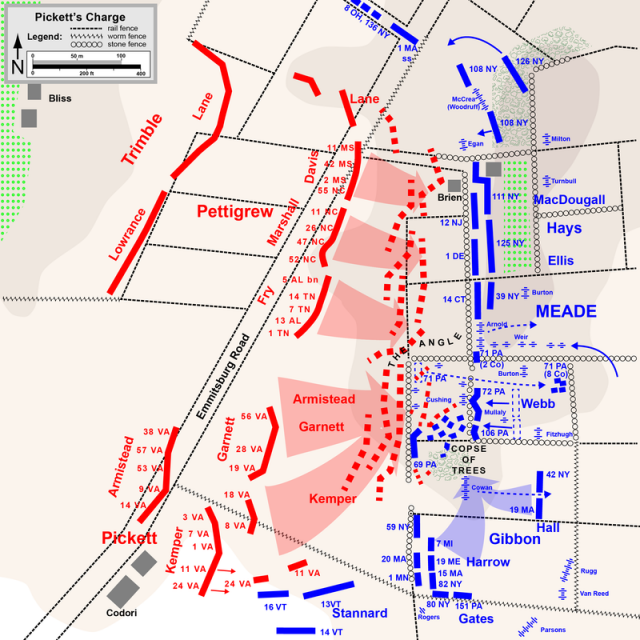
I did not want to leave the impression that the CSA could simply have strolled through these woods and into the Cemetery. It would have been a fight! Perhaps even something as epic as the CSA attacking the 20th Maine. But I still offer the opinion that moving through the Grove would have been safer than crossing the open fields to the west and south as Pettigrew was doing.
Any Union alignment inside Ziegler’s Grove is not well documented. I’d have to assume that there were at least skirmishers deployed there as an early warning of any attempts to probe through the woods. Perhaps Pettigrew/Davies’ troops just never focused on that patch of wooded protection as the cannons and musketry in and around the Cemetery bore down on them.
